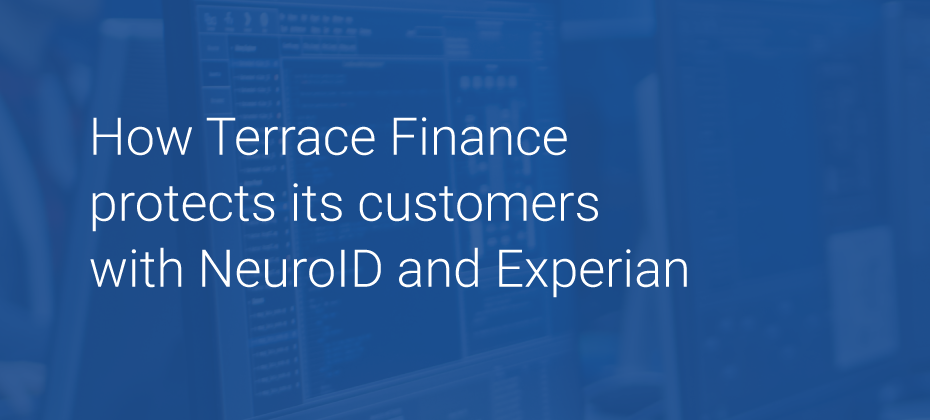Latest Posts

As we enter the end of the year (and holiday sale season), auto marketers are motivated to deliver “Hail Mary” plays —bold, high-impact campaigns designed to resonate with today’s consumers and drive last-minute wins. This post is the third installment in our Experian Automotive Series, spotlighting what leading marketers are prioritizing in the second half of the year. Our first post unpacked how to measure marketing effectiveness using GA4 and attribution strategies. The second post focused on consumer communication—highlighting how texting, direct mail, and zip code targeting are reshaping engagement. Now, we turn our attention to building Fourth Quarter wins with a marketing playbook. From assigning a campaign “Quarterback” to leveraging CPO and service strategies, this post outlines four actionable plays to help you finish the year strong. Playbooks aren’t just reserved for football season. Well-prepared auto marketers are leveraging strategic frameworks to execute their marketing campaigns seamlessly. Whether it’s navigating inventory shifts, optimizing service campaigns, or refining audience targeting, building a marketing playbook tailored to your goals can turn fourth-quarter pressure into performance. Before you close out 2025, make sure the following plays are called: 1) Appoint a Dedicated in-house “Product User” (aka ‘Quarterback’) Just like a winning football team assigns key roles to execute plays seamlessly, successful marketers must have a go-to leader who knows the tools and resources they’re leveraging. This designated resource can rally your team, collaborate on the right plays, and determine the audiences to target—ensuring your products score big with every campaign. Pro-Tip: With Experian Marketing Engine, success comes when a dedicated Lead user can view their AutoInsights and consistently download AutoAudiences. 2) Data with Direction: Guide Every Play The best football players and the best marketers don’t just ‘set’ a plan and ‘forget’ it. They study footage or analyze trends and adjust based on the challenges they face. As a result, marketers need more than one data source. Passes and assists matters—Autotrader notes, "Today's average car buyer has 62 touchpoints on the path to purchase, but the average dealer only tracks 2.” 1 Dealers, Agencies, and OEMs need to interpret multiple data sources, adopt multi-touch attribution (MTA), and adjust their marketing plan. Being data-guided means using insights with context, deploying targeted campaigns, estimating ROI across touchpoints, aligning with all available data sources— and knowing when to call an audible. Pro-Tip: Stay ahead of the curve and measure the effectiveness of your automotive campaigns with Experian Auto Solutions. 3) Consider CPO and Service as Part of Your ‘Special Teams’ Just like kick returns and field goals can decide a game, your CPO and service strategies can create a margin of victory for a dealership. CPO and Used vehicles are in high demand. Review the stats: CPO sales increased 7% MoM from August and are running 2.6% higher YTD when considering the same period from last year 2 Used cars outsell New ones 2:1 3 When it comes to Service, the cost of a repair order (RO) is increasing, and dealers need to stay agile. According to Car Dealership Guy, “The next era of [Service department] growth probably won’t come from charging more —it will come from operating smarter and more efficiently” 4 Pro-Tip: Explore Experian’s CPO Affinity Audience and Service Affinity Audience to identify customers likely to make a CPO purchase or schedule service within a given timeframe. With a Service Affinity, try:(1) Promoting bundled offers tied to seasonal repair (Cold Weather Readiness Check: Tire rotation + Cabin Air Filter Replacement)(2) Sending timely service coupons or Miles Driven reminders.Encourage customers to choose your dealership. 4) Transparency with Data Integration can make a Dealer an MVP with Customers Between a strong omnichannel experience, Vehicle History Data, and truly understanding customers’ needs, each dealer has to have a competitive edge. Cox Automotive’s, Lori Whittman emphasizes, 80% of Consumers expect to work with a dealer...[customers] want to figure out what they can afford. 5 Create a personalized experience by connecting data and reducing customer frustration. Pro-Tip: Experian is the only primary data source for vehicle data, consumer data, and credit data. Experian Marketing Engine helps dealers reach (I)n (T)he (M)odel (M)arket (ITMM) customers where they are in their purchase journey. With a decline in financing incentives and loan & lease payments increasing 6 lean into EME’s Sales Affinity Audience. Consider targeting customers that have a propensity to lease, finance, or trade in their vehicles (amongst other purchase type options). Key Takeaway: Whether you are a Dealer, OEM, Agency, or Lender, as you close out 2025, remember that success in automotive marketing requires both strategic planning and adaptability with compliant data that fits your unique needs. Remember these 4 Pro-Tips when optimizing your playbook: Assign dedicated platform users Integrate multiple data sources to deliver targeted, effective campaigns Include CPO and Service strategies as essential game-changers Transparent integration can keep your dealership in the end zone Decide where you can capture valuable margins based on trends, consider your data consultants, and collaborate on seamless experiences that meet consumer expectations. Ready for Growth Opportunities with Experian Data? Find out more about the data and solutions you need to make critical business decisions. Connect with Experian Automotive and start engaging with the right audiences at each stage of their car buying journey. Learn More Sources: https://www.coxautoinc.com/insights-hub/autotrader-finds-dealers-miss-key-sales-and-wasted-ad-budgets-with-92-of-vehicle-sales-untraceable/ https://www.coxautoinc.com/insights-hub/used-retail-vehicle-sales-august-2025/ https://news.dealershipguy.com/p/used-car-pipelines-are-transforming-here-s-how-dealers-are-building-multiple-buying-channels https://news.dealershipguy.com/p/service-profits-soar-to-record-highs-but-dealer-pricing-power-has-its-limit-report-2025-08-19 https://www.coxautoinc.com/insights-hub/watch-now-2025-cox-automotive-leadership-roundtable-sessions/ https://www.experian.com/automotive/auto-credit-webinar-form

Three winners were announced at Experian’s inaugural Vision Awards ceremony held on Tuesday, October 7 in front of more than 800 attendees at Experian’s Vision Conference held in Miami, Fla. Figure, PREMIER Bankcard and Members First Credit Union were recognized for their work in artificial intelligence, innovation and financial empowerment. The four-day gathering provided a dynamic forum for exploring the latest innovations shaping the future of data-driven decisioning. “Our Vision Awards celebrate the unique impact financial industry leaders can have when data, technology and purpose align,” said Jeff Softley, CEO, Experian North America. “We are proud to recognize these three organizations with whom we collaborate to drive opportunities and help create change for society as a whole.” The Vision Awards recognize the achievements of organizations that accelerate action. These forward-thinking institutions leverage artificial intelligence, innovation and financial empowerment to drive opportunities and create actionable change for consumers, businesses and society. Recognizing Leaders in AI, Innovation, and Financial Empowerment A panel of interdisciplinary judges reviewed nominations from across industries across the regions, evaluating submissions based on rigor, originality, and impact. The 2025 winners reflect how organizations are leveraging data and technology to advance innovation and inclusion. Excellence in AI: Figure Figure’s submission showcased how it has redefined consumer lending outreach through an AI-driven targeting engine powered by more than 90 machine learning models and 5,000+ behavioral and financial features. By combining Experian’s prescreen data with proprietary insights, Figure delivers highly precise, cost-efficient firm offers of credit — helping it become one of the top three home equity line of credit lenders in the U.S. “This win reflects more than just a successful application of AI. It represents the broader innovative culture deeply embedded in our company’s DNA,” said Ruben Padron, Chief Data Officer at Figure. “Our work with Experian has been instrumental in helping us assess creditworthiness and predict borrower intent with greater precision.” Excellence in Innovation: PREMIER Bankcard PREMIER Bankcard continues to demonstrate how financial inclusion and innovation go hand in hand. From modernizing its technology to reimagining its product suite, PREMIER has made bold strides to serve the underserved and democratize access to credit. “This award affirms our belief that financial inclusion and innovation must go hand in hand,” said Chris Thornton, Senior Vice President of Credit at PREMIER Bankcard. “We’re committed to reaching those who need it most, and Experian has proven to be an exceptional partner in that mission.” With more than 30 million customers served, PREMIER has become a leader in first-time and second-chance credit, while also giving back more than $4 billion to charitable causes through its partnership with First PREMIER Bank and founder Denny Sanford. “We’re here to change lives,” Thornton added. “That’s how we measure success — and that’s ultimately what we’re investing in.” Excellence in Financial Empowerment: Members First Credit Union Members First Credit Union was honored for its commitment to inclusive lending and community development across Michigan. In 2024 alone, the credit union’s programs helped thousands of members access fair and affordable credit, supported 166 community organizations, and contributed nearly $230,000 in donations — backed by 2,000 volunteer hours from its employees. “Our impact demonstrates how mission-driven financial institutions can meaningfully expand access, strengthen communities, and foster long-term financial health,” said Carrie Iafrate, CEO/President at Members First Credit Union. “We’re honored to receive this recognition and inspired to continue helping individuals thrive financially.” Honoring the Judges Behind the Vision The 2025 Vision Awards were evaluated by a distinguished panel of judges representing both Experian and external associations and partners in the financial inclusion community, including: Lisa Cantu-Parks, Vice President of Resource Development, Unidos Jean Carlos Rosario Mercado, Juntos Avanzamos Program Officer, Inclusiv Ian P. Moloney, Senior Vice President, Head of Policy and Regulatory Affairs, American Fintech Council Marc Morial, President and CEO, National Urban League Kevin O’Connor, Senior Vice President, Membership and Sponsorship, Consumer Bankers Association Their expertise ensured that the winners reflect the industry’s highest standards of innovation, integrity, and impact. Ian P. Moloney, Senior Vice President, Head of Policy and Regulatory Affairs, American Fintech Council, and Rhonda Spears Bell, Senior Vice President and Chief Marketing Officer, National Urban League, were at the recognition session at Vision and shared about their organizations and experience serving as a judge. Video messages were also shared from Jean Carlos Rosario Mercado of Inclusiv and Kevin O’Connor of Consumer Bankers Association, who were unable to attend the live event. “I greatly appreciated the opportunity to participate as a judge in the Experian Vision Awards because it provided me a chance to look beyond my usual day-to-day, and understand the myriad of innovations and projects going on to help consumers and the industry,” Moloney said. “The award winners tonight showcase the best of our industry, and I appreciate the opportunity to take part in highlighting their success.” “I’m inspired by the outstanding organizations we’re celebrating tonight - each making a lasting impact in our country and globally,” Spears Bell said. “I want to take a moment to recognize Experian - not only as a valued corporate partner, but as a true ally in our mission to advance financial literacy, stability, and generational wealth.” Looking Ahead: Vision Awards 2026 Experian will continue to champion progress in financial services and across all industries, and the Vision Awards offers one of the avenues through which the industry can recognize organizations driving change through responsible innovation. Submissions for the 2026 Vision Awards open on June 1, 2026. To learn more about this year’s winners and how to apply for next year’s program, visit the Vision Awards page.

Buy now, pay later (BNPL) has rapidly matured into a $175 billion market in the U.S. alone, according to PYMNTS, reshaping how consumers approach short-term financing. While early BNPL adoption was often associated with younger, higher-risk borrowers, recent data paints a far more nuanced and encouraging picture. Today’s BNPL consumers are showing signs of financial responsibility, planning, and discipline — offering lenders new opportunities to empower financial futures. BNPL adoption is widening Though Millennials and Gen Z remain the largest user base, usage among Gen X and Baby Boomers continues to grow steadily. Between 2021 and 2025, BNPL adoption among Gen X is projected to rise by 13.7%, and by 8.6% for Baby Boomers. According to a Morgan Stanley report, much of this growth is being fueled by the perceived ease and predictability of BNPL terms. In fact, Experian research1 shows 41% of U.S. adults have used BNPL, with nearly half of those users tapping into the service once a month or more. This increased use of BNPL appears to reflect that BNPL has moved from a niche payment option to a mainstream financial tool. The rise of intentional and responsible spending Contrary to outdated perceptions, most BNPL users are not overleveraged impulse spenders. Instead, Experian data shows: 73% of BNPL users report making payments on time and as agreed.2 75% cite convenience and flexible payments as their primary motivations.3 The desire for control and flexibility is a consistent behavioral theme. Investopedia notes that leading BNPL platforms are leaning into this demand by offering budgeting tools and automatic payment reminders. Why this shift matters for lenders When BNPL data becomes available to lenders, the data it generates will offer a powerful lens into consumer behavior. Beyond challenging old assumptions, these insights can be leveraged to strengthen risk assessment, identify new growth opportunities, and serve consumers who may otherwise be overlooked: Enriched credit risk models BNPL payment data can add an additional layer of insight into consumers’ financial health and behaviors. By integrating this information into their underwriting process, lenders can more accurately assess risk. Serving thin-file consumers Thin-file consumers, such as young adults, may often be overlooked by traditional credit models. BNPL data can provide greater visibility into their financial habits, helping lenders expand credit access more equitably and support greater financial inclusion. Evolving with the BNPL consumer Today’s BNPL users are not who they were five years ago. They are increasingly financially literate, focused on credit health and integrating BNPL into everyday budgeting. When BNPL data becomes available, lenders will have a chance to: Sharpen risk models with alternative data Personalize offers with greater precision Expand financial access to underserved groups BNPL users are changing — and lenders who understand this shift will be ready to serve a broader, more responsible borrower base when the data becomes actionable. We continue to work closely with BNPL providers to support expanded data furnishing and bring greater visibility to both consumers and the industry. Visit our webpage to discover the latest insights and developments on BNPL data. Learn more 1-3Experian commissioned Atomik Research to conduct an online survey of 2,005 adults throughout the United States. The margin of error is +/- 2 percentage points with a confidence level of 95 percent. Fieldwork took place between May 15 and May 20, 2025.

From innovation to inspiration, Day 2 of Vision 2025 delivered on every front. Attendees experienced a powerful lineup of speakers, engaging breakout sessions and hands-on exploration of technologies shaping the future of finance. Setting the tone: Responsible AI and the future of work The morning opened with an insightful keynote from Sol Rashidi, Chief Strategy Officer of AI & Data at Cyera. With a forward-looking perspective on responsible AI, Sol emphasized the need for data stewardship, workforce readiness and using AI to amplify, not replace, human potential. Her message resonated deeply: Responsible AI means outsourcing tasks, not critical thinking. Challenging convention with Dave Portnoy Next, Dave Portnoy, Founder and Chief of Content at Barstool Sports, brought an energetic conversation on entrepreneurship and disruption in the digital age. His keynote was a reminder that progress is driven by those willing to challenge convention, adapt fast and embrace change with confidence. Exploring the future of financial services After the general session, attendees joined a new wave of breakout sessions exploring the future of financial services. Discussions spanned from how fintech disruptors and embedded finance are reshaping e-commerce and investments to how data and analytics are unlocking new opportunities in housing, lending and fraud prevention. Meanwhile, the Innovation Showcase brought Experian’s cutting-edge capabilities to life, highlighting the power of AI, analytics and modern platforms in driving smarter, faster financial solutions. Closing inspiration: Shaquille O’Neal on reinvention and resilience As the day came to a close, NBA legend Shaquille O’Neal took the stage, captivating the audience with his trademark humor and hard-earned wisdom. He shared stories of his iconic basketball career and business ventures, and his philosophy behind the “business of fun,” leaving us all inspired to think big, act boldly and lead with kindness. A Vision to remember While Vision 2025 has come to a close, the conversations, partnerships and ideas sparked here will continue to shape what’s next in our industry. Thank you for making this year’s event our most inspiring and impactful yet. We can’t wait to see you next year in San Antonio, Texas!

Day 1 of Vision 2025 is in the books – and what a start. From bold keynotes to breakout sessions and networking under the Miami sun, the energy and inspiration were undeniable. A wave of change: Jeff Softley opens Vision 2025 The day kicked off with a powerful keynote from Jeff Softley, Experian North America CEO, who issued a call to action for the industry: to not just adapt to change, but to lead it. “It isn’t a ripple – it’s a tidal wave of technology,” Jeff said. “Together we ride this wave with confidence.” His keynote set the tone for a day centered on innovation and the future of financial services – where technology, insight and trust converge to create lasting impact. Jeff continues this conversation in the latest Experian Exchange episode, where he explores three forces shaping the industry: the rise of AI, the demand for personalized digital experiences and the mission to expand credit access for all. Turning vision into action: Alex Lintner on agentic AI Building on Jeff’s message, Alex Lintner, CEO of Experian Software and Technology, took the stage to show how Experian is turning innovation into measurable results. His keynote explored how agentic and advanced AI capabilities are redefining financial services ROI and powering the next generation of the Ascend Platform™. For a deeper look into how Experian is reshaping the economics of credit and fraud decisioning, read the latest American Banker feature. Unfiltered insights from “Mr. Wonderful” The day’s highlight came from Kevin O’Leary, investor, entrepreneur and the always-candid “Mr. Wonderful.” With his trademark wit and honesty, Kevin shared sharp insights on thriving in a disruptive economy, offering candid advice on leadership, risk and opportunity. He even gave attendees a peek behind the Shark Tank curtain, revealing a few surprises and the mindset that drives his bold business decisions. Breakouts that inspired and informed The conference floor buzzed with energy as attendees joined breakout sessions on fraud defense, AI-driven personalization, regulatory trends and consumer insights. Sessions highlighted how Experian’s unified value proposition is fueling double-digit growth, how to future-proof credit risk strategies and how data and innovation are redefining customer engagement across the lifecycle. Hands-on innovation and connection The Innovation Showcase gave attendees an up-close look at Experian’s latest tools and technologies in action. Meanwhile, friendly competition kept the excitement high through the Vision mobile app leaderboard – with every check-in and connection earning points toward the top spot. Networking beyond the conference hall walls As the sun set, Vision 2025 shifted into high gear with unforgettable networking events across Miami – from golf at the Miller Course to art walks, brewery tours and a scenic cruise through Biscayne Bay. An evening to remember The day closed with the first-ever Vision Awards Dinner, celebrating standout leaders who are shaping the future of financial services. Up Next: Day 2 The momentum continues tomorrow as more keynote speakers take the stage. Stay tuned for more insights, innovation, and inspiration from Vision 2025.

In today’s fast-moving financial services landscape, fintechs face a dual challenge: scaling profitably while managing increasingly complex risk. From credit underwriting to fraud prevention, every decision carries both opportunity and exposure. That’s why forward-looking fintech leaders are turning to data-driven credit risk management strategies to sharpen decision-making, enhance compliance and unlock growth. Why data-driven risk management matters in fintech Fintechs are navigating an environment shaped by rapid innovation, shifting regulations and evolving consumer expectations. Within this landscape, three challenges come to the forefront: Evolving fraud threats: Fraudsters are advancing quickly, exploiting digital onboarding and consumer data. Siloed functions: Traditionally, credit, fraud and compliance were separate, but as fraud detection becomes a higher priority, forward-looking companies are now integrating these functions, with84% planning to share more data across the industry to help prevent fraud.1 Operational complexity: Fintechs must balance growth with compliance, often with lean teams, tech-debt that demands a strong return on investment (ROI)and aggressive timelines. These challenges make it clear that static, one-dimensional risk measures are no longer sufficient. By leveraging a unified decisioning platform that incorporates behavioral data and advanced analytics, fintechs can gain a more holistic view of consumer financial behavior. This broader perspective not only improves the accuracy of credit assessments but also strengthens defenses against sophisticated fraud threats. Driving efficiency through automation A data-driven risk management strategy is only as effective as its ability to be executed at scale. This is why automation is no longer a nice-to-have, but a competitive necessity in an industry defined by speed, complexity and rising consumer expectations. By embedding automation into credit and fraud risk management processes, fintechs can create systems that are more efficient, resilient and compliant. Key advantages include: Increased underwriting efficiency: Combined with data-driven insights, automated decisioning platforms allow fintechs to evaluate applications quickly and more accurately, resulting in faster and fairer credit decisions. Portfolio growth: Leveraging expanded data and automation allow enables smarter customer segmentation and more precise risk-based pricing, driving broader market reach and greater profitability. Fraud mitigation: Automated identity verification helps fintechs quickly validate customers, reduce friction in the onboarding process and block fraudulent activity before it impacts portfolios. Regulatory readiness: Unified, automated risk processes enable fintechs to adapt quickly to regulatory shifts, fraud trends and market disruptions, building long-term sustainability. Comparing legacy and modern credit risk approaches in fintech Data and automation have become essential for executing risk strategies at scale, highlighting just how far credit risk management has evolved. Below are key differences between traditional and modern approaches to credit risk. FeatureLegacy approachData-driven approachRisk detectionPoint-in-time scoresTrajectory-based modelingFraud preventionManual reviewAutomated, behavioral analyticsComplianceSiloed functionsUnified decisioning platformCustomer experienceSlow, manualFast, fair, automated Why fintechs choose Experian® As fintechs navigate an environment of increasing regulation, fraud sophistication and consumer expectations, the winners will be those who embrace a data-driven, automated and converged approach to credit and fraud risk management. Experian offers fintechs a partner with unmatched data accuracy, robust alternative data capabilities and end-to-end decisioning solutions designed for today’s converged risk landscape, including: Trended 3DTMattributes capture 24 months of key consumer credit activity, enabling fintechs to better manage portfolio risk and determine next best actions. Cashflow Score leverages consumer-permissioned banking transaction data to predict the likelihood of a borrower going 60+ days past due in the next 12 months, providing deeper visibility into financial health and repayment capacity. PowerCurve® is a unified, automated decision engine that incorporates data, strategy design, decision automation and detailed monitoring and reporting to help fintechs streamline credit decisions with speed and consistency. Our behavioral analytics capabilities, powered by NeuroID, provide a seamless, invisible gauge of user risk, allowing fintechs to proactively mitigate fraud while creating a secure, low-friction customer experience. Frequently asked questions What is data-driven risk management in fintech? It’s the application of advanced analytics, behavioral data and automation to help fintechs improve credit risk assessment, fraud prevention and compliance in digital-first environments. How does automation help fintechs manage credit risk? Automation enables fintechs to scale efficiently by streamlining underwriting, minimizing manual errors and ensuring consistent decision-making. What are the benefits of unified decisioning platforms? Unified platforms integrate credit, fraud and compliance decisions into a single workflow, helping fintechs onboard customers faster, respond quickly to fraud threats and maintain compliance without slowing down innovation. Discover how our fintech solutions can help your fintech strengthen credit risk management, reduce fraud and accelerate growth. Learn more 1Experian Vision

Continuing our in-depth exploration of what automotive marketers are prioritizing, we’re taking a closer look at how refining communication and messaging strategies can help enhance the connection with consumers. As communication preferences continue to evolve for consumers, businesses have to rethink how they engage. By creating strategic plans to stay ahead, dealers, along with their advertisers and agencies, can build stronger relationships and drive better outcomes across various departments. Here are three ways to align your messaging with today’s consumers: 1. Leverage the Preferred Method of Communication for Consumers: Text messages are read 98% of the time and within 3 minutes 95% of the time, while answer rates for phone calls from unknown numbers have dropped below 15%. ¹ When it comes to Fixed Ops, Derek Simonds, Executive VP of Automotive at Numa, quotes Cox Automotive and CDK, “Over 90% of service customers would rather text with the service department than they would talk to them.” ² According to J.D. Power, client retention is key, with 82% of consumers choosing to cut ties with a dealership due to poor communication alone. 2. Assess Your Local Audience and Use Direct Mail to Connect: Rural markets may still appreciate traditional direct mail in smaller marketers. ³ When used strategically, direct mail could remind consumers of a dealer's presence and offerings. Dealers in these areas may find that physical mailers are still effective, especially when paired with offers or event invites that speak directly to the needs of the community. 3. Generate Offers by ZIP Code: Consider a ZIP code strategy and monitor local trends to move inventory with offers that focus on affordability for consumers. Do what makes sense for your ZIP, dial in what’s moving, what’s not, and experiment with messaging.4 Let your ZIP code data guide you: spot trends, adjust offers, and refine your message accordingly. This kind of geotargeting ensures you’re marketing to the right audience. Key Takeaway: Having a strong understanding of your consumer base and how they prefer to communicate is essential. Leading dealers and marketers constantly test, learn, and evolve. Right now, texting might be a preference for most consumers and direct mail could work in remote areas but be sure to pair these insights with a strategy that creates a well-rounded, responsive experience. Need help getting started? The Experian Marketing Engine can help with ZIP code targeting and unlock more meaningful consumer engagement. We empower automotive marketers to identify the right audience, uncover the most appropriate communication channels, develop messages that resonate, and measure the effectiveness of their marketing activities. Our data driven and predictive modeling audiences can identify consumer preferences and needs proactively. Connect with Experian Automotive and start reaching in-market consumers today! Discover More Sources: https://news.dealershipguy.com/p/dealers-are-saving-thousands-in-labor-in-fixed-ops-2025-05-30 https://news.dealershipguy.com/p/customers-calling-the-service-deptartment-best-dealerships-are-evolving-longo-toyota-numa-2025-07-18 https://news.dealershipguy.com/p/the-road-to-40-stores-within-10-years-proven-frameworks-to-scale-effectively-2025-07-25 https://news.dealershipguy.com/p/new-vs-used-car-sales-how-zip-code-specific-strategies-are-shaping-dealer-results-07-29-2025

Since mortgage rates have remained high even after recent Federal Reserve rate-cutting activity, there is limited rate incentive to refinance for the vast majority of borrowers. In the absence of significant rate incentive, borrower mobility and behavioral tendencies have become outsized drivers of both prepayment speeds and origination volumes. Unfortunately, traditional MBS market data does not contain adequate information for investors to analyze either borrower mobility or behavioral tendencies like sources of payoff funds (i.e., cash payoff, refinance of existing loan, opening of a new lien on a 2nd home, etc.). By using Experian's Mortgage Loan Performance (MLP) Dataset, a monthly-updated time series featuring combined loan, borrower, and property-level details covering nearly the entire US mortgage market since 2005, it's possible to examine patterns in behavior for borrowers who have prepaid their loans early, such as: The proportion of paid-off borrowers who retain the subject property (“stayers”) versus those who move (“movers”); and for both of these subsets, the percentage of people who re-enter the mortgage market with a new loan ("returners") compared to those who leave the mortgage market after paying off their loan ("leavers"). Classification as returner or leaver in the charts below is based on whether the paid-off borrower opened a new mortgage loan as of the end-of-August observation date. Sources of mortgage payoff funds — what proportion of pay-off was via refinance of the subject property vs. opening a new lien on a 2nd home or investment property? What proportion pays off in cash resultant from a sale of the subject property or cash out-of-pocket while retaining the subject property? For the set of returners, what is the typical time lapse between payoff and opening of a new mortgage, i.e., are most payoffs simultaneous or are a significant number of borrowers utilizing bridge financing, or paying off a current loan while they shop for a new home and new loan? For the set of leavers, what are the credit, income and demographic characteristics of these borrowers? Are they leaving the mortgage market because they are unable to get a new loan due to weak credit or insufficient income? Mobility and source of payoff cash dynamics are summarized below for a sample of ~ 63,000 mortgage payoff events, drawn from MLP, which occurred from February to July 2025. Amongst other trends, we see that approximately 70% of borrowers who paid off their loan exited the mortgage market (~40% retained property after a cash payoff + ~4% sold property and bought a new property in cash + ~24% sold property and didn’t purchase another property). This high proportion is probably driven in part by the relative lack of rate/term refinance and purchase activity given the current rate environment. When we look at all payoffs in MLP over the same time period — 2.3 million payoff events — the ~70% proportion of leavers holds. Within this larger sample, we also break down time to re-entry for the returners. Unsurprisingly, of the 30% returners, the vast majority open a new loan just prior to or within a month of prepayment: Since MLP contains monthly-refreshed, joined credit profile data for every mortgaged borrower, we can also examine the credit and income characteristics of leavers to determine if poor credit or limited income prohibited re-entry. This analysis reveals that leavers are generally not credit or income limited; the pool of leavers is characterized by the following average metrics: 746 current Vantage 3.0 credit score 49 years of age $99,759 current modeled income 34.8 back-end DTI The following table stratifies the leaver population by generation: Further segmentation by loan servicer, originator and borrower credit profile (e.g., dollar amount of student loan debt outstanding) and past behavior (e.g., how many mortgages has this borrower refinanced in the past?) across all tradelines are potential next steps. As the rates environment evolves, we will monitor mobility trends, the ratio of borrowers paying off loans while moving versus those staying, and how borrowers decide to finance their prepayments. In addition to rates, changes in HPI, unemployment and underwriting guidelines will influence these behaviors. By leveraging new datasets like MLP which capture not only loan performance, but also regularly refreshed credit profile, behavioral trends and property details over the entire credit lifespan of a consumer and all their tradelines, investors can incorporate a 360-degree view of loan, borrower and property into their predictive analyses.

Artificial intelligence (AI) is transforming industries worldwide, and financial services are no exception. One of the most impactful applications is AI credit scoring, a modern approach that uses advanced algorithms to assess consumer creditworthiness with precision, fairness and efficiency.AI credit scoring addresses traditional limitations by introducing more advanced, data-driven techniques. Instead of relying solely on static, historical data points, AI models can process vast amounts of diverse information in real time, spotting patterns and predicting behaviors more accurately. How AI is being used in credit scoring Traditional credit scoring has long relied on structured data such as payment history, credit utilization, and length of credit history. While effective, these models can be limited in capturing a holistic view of an individual’s financial behavior. AI credit scoring expands this view by: Leveraging alternative data: AI models can analyze non-traditional data sources such as rental payments, utility bills, and even digital transaction histories, providing a broader perspective for those with limited credit history. Real-time analysis: Machine learning enables lenders to evaluate applicants faster by instantly processing large amounts of data. Pattern recognition: AI systems identify subtle behavioral and financial patterns that may indicate creditworthiness beyond what traditional models can detect. Continuous learning: Unlike static scoring systems, AI-based models may improve over time as they ingest more data and refine their predictions. Using these methods, AI credit score systems create a richer, more nuanced picture of a borrower’s financial health, making lending more inclusive and predictive. The benefits of AI credit scoring The adoption of AI in credit scoring has created significant benefits for lenders, regulators, and consumers alike: Improved accuracy: AI models draw on a broader range of data, reducing reliance on limited or outdated metrics. Financial inclusion: Millions of consumers globally remain outside the traditional credit system. AI credit scoring allows lenders to evaluate previously overlooked applicants, such as young adults, recent immigrants, or gig economy workers. By factoring in alternative data, lenders can serve historically underserved individuals. Faster and more efficient processes: AI can automate large portions of the decision-making workflow, significantly reducing the time it takes to approve applications. This means faster access to credit for consumers and reduced operational costs for lenders. Fraud detection and risk mitigation: Advanced machine learning models can detect anomalies in borrower behavior that may indicate fraud or identity theft. By flagging these risks earlier, lenders protect both themselves and their customers. Enhanced customer experience: AI-driven insights help lenders design more personalized products and repayment plans. Institutions can better understand customer needs and financial behaviors by offering tailored solutions that improve loyalty and trust. Challenges of AI in credit scoring While the promise of AI is transformative, it also brings new challenges that financial institutions must navigate carefully. Bias and fairness: AI models may inadvertently replicate biases in training data, raising concerns about fairness and equity. Transparency: Complex algorithms can be challenging to explain to regulators, lenders, and consumers, creating a "black box" perception. Data privacy: Using alternative data for credit scoring requires strict compliance with privacy regulations and consumer consent. Regulatory alignment: As AI evolves, credit scoring must comply with evolving financial and consumer protection laws. Why partner with us At Experian®, we understand that trust, accuracy, and transparency are essential in the financial ecosystem. By combining decades of expertise in credit data with AI solutions, we deliver AI credit score solutions that empower lenders to make smarter, fairer, and faster decisions. With us as your trusted partner, you can embrace AI-powered credit solutions confidently and responsibly. Global data expertise: We leverage one of the world’s most comprehensive credit databases, ensuring high-quality insights. Responsible AI: Our solutions are built with fairness, transparency, and regulatory compliance at the forefront. Proven results: We partner with financial institutions worldwide to unlock opportunities for lenders and consumers through AI-driven insights. Commitment to inclusion: Our AI credit scoring tools are designed to expand financial access for underserved communities. The rise of AI credit scoring marks a new era in financial services, where accuracy, speed, and inclusivity converge to benefit lenders and consumers alike. While challenges remain, responsible use of AI ensures that credit scoring becomes more transparent, fair, and effective. Learn more

From shifting consumer preferences to aging vehicles reshaping service demand, data from the second quarter of 2025 revealed a dynamic landscape where new and used vehicle registrations grow, and the aftermarket “Sweet Spot” becomes a rich source for service providers. Experian’s Automotive Market Trends Report: Q2 2025 found that light-duty vehicles reached 293.5 million, up from 291.1 million through Q2 2024. This growth can be attributed to the 16.3 million new vehicle registrations and 39.5 million used vehicle ownership changes, demonstrating a healthy turnover in the market. Taking a closer look at the registration trends, new vehicle registrations saw a 7.7% year-over-year increase, reaching 4.2 million through Q2 2025. Meanwhile, used vehicle registrations also slightly increased by 2% from last year, rising to 10.2 million this quarter, as buyers continued to seek pre-owned options amid conversations around affordability. Leveraging aftermarket trends for service opportunities As vehicles age and warranties expire, there is a natural shift to aftermarket services, and the continuous growth in the aftermarket sweet spot shows that consumers are willing to keep their vehicles for longer periods of time, as long as they’re still functional. The aftermarket sweet spot is made up of vehicles aged 6-to-12-years old and are typically out of manufacturer warranty, making them prime candidates for aftermarket services. For instance, 35.5% of all light-duty vehicles on the road fell into this category through Q2 2025, signaling an opportunity for service providers and parts manufacturers. With total vehicle registrations on the rise and more vehicles entering the aftermarket sweet spot, it gives automotive professionals in all stages of the buying journey an opportunity to capitalize on these positive trends and meet consumers where they are needed the most. To learn more about vehicle market trends, view the full Automotive Market Trends Report: Q2 2025 presentation on demand.

While the dynamics of the electric vehicle (EV) market continue to drive headlines, recent data reveals that although EV registrations remain steady, hybrids are becoming a practical bridge between gas-powered vehicles and EVs. Experian’s Automotive Consumer Trends Report: Q2 2025 found EVs accounted for 9.2% of new retail registrations, down from 10.5% in Q2 2024, and gas-powered vehicles declined from 73.7% to 71.9% year-over-year. Meanwhile, hybrids jumped from 15.8% to 18.9% in the same time frame. Digging a bit deeper, one of the most telling insights from the data was the apparent transition that consumers make when returning to the market for another vehicle purchase. The data shows that as consumers become familiar with alternative fuel types, some “graduate” into more electrified vehicles. For example, nearly 13% of gas-powered vehicle owners replaced their vehicle with a hybrid (10.8% for hybrids and 2.0% for plug-in hybrids [PHEV], respectively). Meanwhile, 52.2 % of hybrid owners returned to the market to purchase another hybrid and 5.0% returned to purchase a PHEV. Further along in the electrified vehicle funnel, we’re seeing 11.0% of PHEV owners returning to market to purchase a hybrid, while 31.7% returned to purchase another PHEV and 22.2% purchase an EV. Most EV households are not exclusively electric Data in the second quarter of this year found 80% of EV-owning households also have a gas-powered vehicle and 14.9% also own a hybrid, demonstrating that consumers are looking for ways to accommodate their diverse driving needs. While the interest in EVs remains strong, many consumers still rely on more traditional fuel types for various reasons. Though, hybrids are notably becoming a middle ground solution as they offer fuel efficiency without the other concerns that can accompany an EV. As alternative fuel types continue to create a household name in the automotive industry, hybrids are starting to play a notable role in the transition to electrification. Data from this quarter not only shows that consumers are experimenting with alternative fuel types, but they’re also integrating them into multi-vehicle households. With their growing popularity reflects a pragmatic approach to balancing the latest innovation with everyday practicality, hybrids may be the key steppingstone that brings mainstream consumers closer to the electrified space. To learn more about alternative fuel type insights, view the full Automotive Consumer Trends Report: Q2 2025 presentation.

As fraud continues to rise in the rental housing market, tenant screening practices are evolving. In an earlier blog, I explored how Experian Observed DataTM can provide early indicators of income and employment consistency, offering screening companies a way to reduce reliance on costly or time-intensive verification methods. In this follow-up, I explore two additional tools that strengthen the tenant screening process: Experian VerifyTM for Research Verifications and Experian Verify for Permissioned Verification's AI-powered Document Review. Used together, these solutions enable a layered approach that boosts both efficiency and prevention of fraud. Modernized Research Verifications Manual employment and income and employment checks—once the standard for tenant screening—are time-consuming and often inconsistent. Traditionally, screening companies had to reach out directly to employers and request proof of employment. While still useful, this method puts pressure on internal resources and is not always scalable. To streamline manual verification, many organizations are partnering with third-party providers, especially those that take a digital-first approach. Outsourcing allows screening companies to delegate outreach, follow-ups, and fraud detection to specialized teams trained in document validation and employer communication. These services deliver the same insights internal teams would gather, while freeing up in-house resources for more strategic initiatives. By leveraging digital tools such as conversational AI, online forms, and automated workflows—combined with human oversight—digital-first vendors offer a more scalable and cost-effective alternative to fully manual processes. This approach not only reduces operational costs but also shortens turnaround times, helping screening companies respond faster without compromising accuracy or fraud resistance. Key advantages:[MJ1] Reduces the burden on internal staff Ensures consistency and fraud awareness in document review Provides a reliable fallback when other verification tools return limited data This approach is especially valuable when initial data sources yield incomplete results and further confirmation is required. AI-Enhanced Document Upload and Review Another common scenario in tenant screening is the submission of income documents by the applicant, often in the form of paystubs or bank statements. Manual review of these documents is prone to error and increasingly vulnerable to sophisticated forgeries, including those generated by artificial intelligence. AI-powered document analysis tools are now helping screening companies process uploaded documents more securely and efficiently. These platforms typically work by: Allowing applicants to upload documents through a secure portal Using AI to scan for signs of tampering, fabrication, or inconsistency Returning standardized results that are easier to evaluate and compare By automating the detection of anomalies and potential fraud indicators, these tools reduce the workload for staff while improving the reliability of the review process. Benefits include: Faster review and turnaround times Improved fraud detection capabilities Greater consistency across applicants This method is especially useful when traditional employer APIs are unavailable or when screening companies need additional confirmation beyond initial data sources. A Layered Approach to Verification By combining different verification methods, screening companies can design workflows that adapt to a wide range of applicant profiles and risk scenarios. A layered strategy might include: Starting with an inexpensive source of income or employment data to identify likely matches Using AI-based document review when additional validation is needed Turning to manual research verifications only when necessary This cascading process allows screening companies to control costs while maintaining a strong defense against fraud. It also ensures that higher-cost methods are used only when the earlier steps do not provide enough confidence to proceed. Modern Challenges Require Modern Solutions Fraud in tenant screening is increasing rapidly. According to industry surveys, over 93 percent of screening companies have encountered fraud in the past year, and the majority have dealt with falsified income documentation. Traditional approaches, especially manual review, are no longer sufficient on their own. By rethinking verification strategies and incorporating modern tools like outsourced research verification and AI-enhanced document review, screening companies can reduce risk, improve efficiency, and better prioritize their resources. Learn More For organizations interested in implementing these types of verification tools, several providers—including Experian—offer services designed to support this layered approach. These solutions can help screening companies strike the right balance between cost, compliance, and fraud resistance. To learn more, visit experian.com/verify.

In an ever-evolving automotive landscape, where shifting consumer behavior meets fluctuating market dynamics, Experian’s State of the Automotive Finance Market Report: Q2 2025 delivers key insights into how both consumers and professionals are adapting to the changes. This quarter’s report revealed a sharp increase in vehicle refinancing—up nearly 70% from Q2 2024—as consumers capitalized on the more stable rate environment. In fact, after refinancing, the average interest rate went from 10.45% to 8.45%. That shift resulted in their monthly payment dropping by an average of $71. Interestingly, credit unions played a significant role in the refinance surge, increasing their market share from 63.22% last year to 68.33% this quarter, and borrowers who refinanced through credit unions saw their monthly payments decrease by $87 on average. Banks saw a slight dip in their share of the refinancing market year-over-year, going from 22.71% to 21.45%, and borrowers who refinanced through them saved an average of $46 a month. New leaders emerge as the lender market share continues to evolve Taking a deeper dive into the automotive finance market share, banks reclaimed their leading position for total vehicle financing, rising to 27.50% in Q2 2025, from 24.50% in Q2 2024. Meanwhile, captives declined from 30.17% to 26.63% year-over-year, and credit unions slightly increased from 20.35% to 21.04% during the same period. For new vehicles, captives continued to lead at 52.39% this quarter, though it was a drop from 60.74% last year. On the other hand, banks grew from 21.12% to 25.91% and credit unions went from 9.99% to 12.24% in the same time frame. On the used side, banks edged ahead, increasing their share to 28.59% in Q2 2025, from 26.80% last year. Credit unions saw slight growth from 27.59% to 27.63%, while captives declined from 7.83% to 6.40% year-over-year. As affordability remains a key priority, consumers seem to be exploring financing options that offer more favorable terms. While Experian Automotive’s report continues to illustrate the evolving dynamics, these data-driven insights can empower both consumers and industry professionals to make smarter financial decisions. To learn more about automotive finance trends, view the full State of the Automotive Finance Market Report: Q2 2025 presentation on demand.

Income and employment verification fraud is surging in the tenant screening industry, putting traditional verification methods under intense pressure. As economic uncertainty grows and document forgery becomes more sophisticated, it's clear that legacy processes are no longer sufficient. Recent findings highlight the urgency for change. According to the NMHC Pulse Survey, 93.3% of property managers reported encountering fraud in the past year, with 84.3% citing falsified paystubs and fake employment references as the most common tactics. As AI-generated forgeries become increasingly convincing and accessible, relying solely on manual review is proving inadequate. A Shift in Strategy: Toward Smarter Income and Employment Verification Historically, tenant screeners have relied on methods such as manual document review, direct employer contact, payroll APIs, and verification of assets (VOA). While these remain important, they are no longer capable of keeping pace with today’s verification challenges. In response, many screening companies are exploring new income verification tools that offer improved fraud prevention, lower operational costs, and faster turnaround. These innovations include layered approaches that combine observed data, permissioned uploads, and automated fraud detection technologies. Introducing Experian Observed DataTM in Tenant Screening One emerging solution in the fight against rental application fraud is the use of observed data during tenant screening. This method uses collectively sourced insights to assess whether an applicant’s income and employment claims are likely to be accurate. Experian Observed Data is takes inputs from many sources including creditors, property managers and others. This type of data starts out as consumer stated data but is substantiated by third party creditors who have originated lending products and report on the performance of these products. Although this method is not FCRA-compliant and cannot be used to approve or deny applications, it is highly effective as an early step in the screening process. Some sources of Experian Observed Data include a confidence score that can help screeners assess how closely an applicant’s stated information aligns with observed trends and can help screening companies to better assess their prioritization queue to determine if more data points are needed. Why Experian Observed Data Matters To combat fraud without driving up costs or slowing down the tenant screening process, screening companies need reliable, efficient tools. Experian Observed Data supports this need by offering a faster, more scalable approach to assessing risk. Key benefits include: Early detection of discrepancies in reported income or employment The ability to prioritize high-risk applications for further review A more cost-effective alternative before committing to premium verification services For instance, if an applicant has a strong credit report and clean background check, and Experian Observed Data supports their stated income, further verification may be unnecessary. If inconsistencies are flagged, screening companies can escalate to tools such as AI document analysis or direct outreach. Fraud Prevention Through Smarter Workflows The use of Experian Observed Data also aligns with a broader shift toward AI document fraud detection and layered verification strategies. Instead of applying the same tools to every application, screening companies can now implement decision trees that use lower-cost tools first, escalating only when risk or uncertainty increases. This adaptive approach is particularly relevant as screener companies strive to improve accuracy and efficiency at scale. By deploying Experian Observed Data as a first step, tenant screening professionals can better allocate resources while remaining vigilant against fraud Future Proofing Verificaiton As the income and employment verification landscape evolves, screening companies must move beyond legacy methods and adopt tools that are responsive to today’s challenges. Experian Observed Data provides a scalable, low friction starting point that supports smarter decision-making and better fraud detection. Coming to our next blog: We will explore how manual research verifications and AI-powered document upload solutions enhance the effectiveness of modern income verification tools, creating a more resilient and adaptable tenant screening process.

In today’s digital lending landscape, fraudsters are more sophisticated, coordinated, and relentless than ever. For companies like Terrace Finance — a specialty finance platform connecting over 5,000 merchants, consumers, and lenders — effectively staying ahead of these threats is a major competitive advantage. That is why Terrace Finance partnered with NeuroID, a part of Experian, to bring behavioral analytics into their fraud prevention strategy. It has given Terrace’s team a proactive, real-time defense that is transforming how they detect and respond to attacks — potentially stopping fraud before it ever reaches their lending partners. The challenge: Sophisticated fraud in a high-stakes ecosystem Terrace Finance operates in a complex environment, offering financing across a wide range of industries and credit profiles. With applications flowing in from countless channels, the risk of fraud is ever-present. A single fraudulent transaction can damage lender relationships or even cut off financing access for entire merchant groups. According to CEO Andy Hopkins, protecting its partners is a top priority for Terrace:“We know that each individual fraud attack can be very costly for merchants, and some merchants will get shut off from their lending partners because fraud was let through ... It is necessary in this business to keep fraud at a tolerable level, with the ultimate goal to eliminate it entirely.” Prior to NeuroID, Terrace was confident in its ability to validate submitted data. But with concerns about GenAI-powered fraud growing, including the threat of next-generation fraud bots, Terrace sought out a solution that could provide visibility into how data was being entered and detect risk before applications are submitted. The solution: Behavioral analytics from NeuroID via Experian After integrating NeuroID through Experian’s orchestration platform, Terrace gained access to real-time behavioral signals that detected fraud before data was even submitted. Just hours after Terrace turned NeuroID on, behavioral signals revealed a major attack in progress — NeuroID enabled Terrace to respond faster than ever and reduce risk immediately. “Going live was my most nerve-wracking day. We knew we would see data that we have never seen before and sure enough, we were right in the middle of an attack,” Hopkins said. “We thought the fraud was a little more generic and a little more spread out. What we found was much more coordinated activities, but this also meant we could bring more surgical solutions to the problem instead of broad strokes.” Terrace has seen significant results with NeuroID in place, including: Together, NeuroID and Experian enabled Terrace to build a layered, intelligent fraud defense that adapts in real time. A partnership built on innovation Terrace Finance’s success is a testament to what is possible when forward-thinking companies partner with innovative technology providers. With Experian’s fraud analytics and NeuroID’s behavioral intelligence, they have built a fraud prevention strategy that is proactive, precise, and scalable. And they are not stopping there. Terrace is now working with Experian to explore additional tools and insights across the ecosystem, continuing to refine their fraud defenses and deliver the best possible experience for genuine users. “We use the analogy of a stream,” Hopkins explained. “Rocks block the flow, and as you remove them, it flows better. But that means smaller rocks are now exposed. We can repeat these improvements until the water flows smoothly.” Learn more about Terrace Finance and NeuroID Want more of the story? Read the full case study to explore how behavioral analytics provided immediate and long-term value to Terrace Finance’s innovative fraud prevention strategy. Read case study